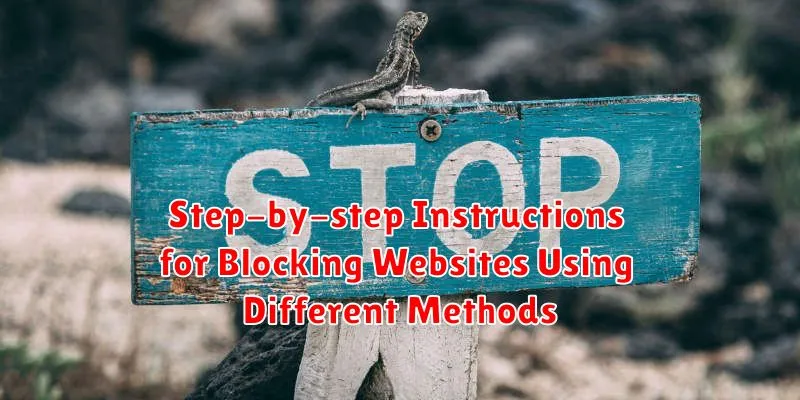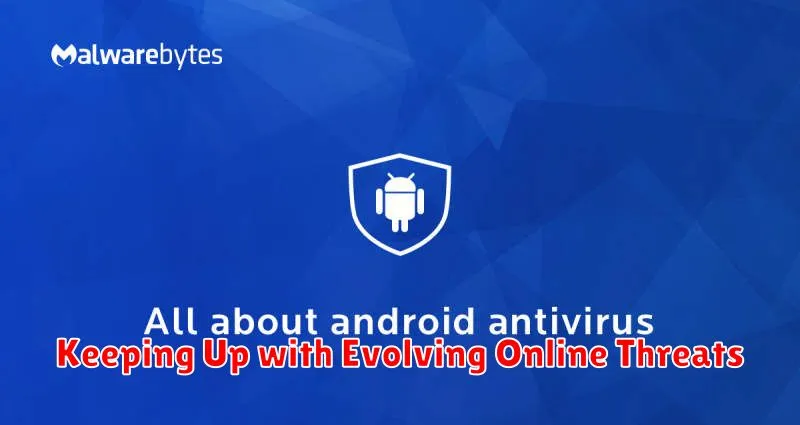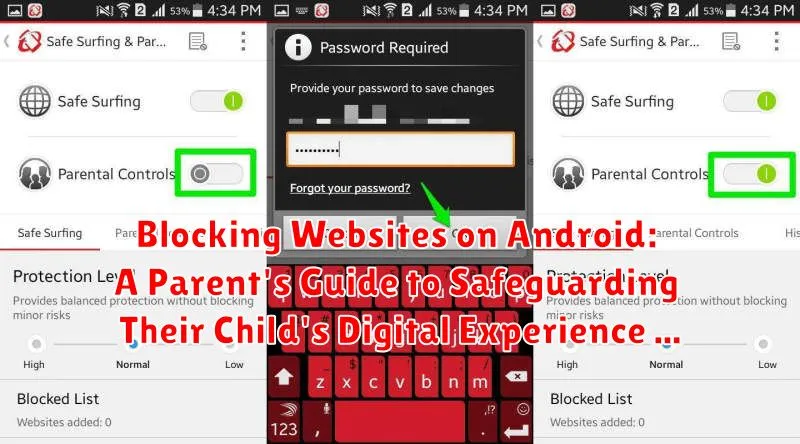In today’s digital age, children are increasingly exposed to the vast expanse of the internet. While the online world offers incredible learning and entertainment opportunities, it also presents potential risks. As a parent, safeguarding your child’s digital experience is paramount. This guide focuses on blocking websites on Android devices, providing you with the tools and knowledge to create a safer online environment for your child. We’ll cover various methods, from using built-in Android features to leveraging third-party apps, ensuring you can effectively manage and filter the content your child accesses. Learn how to block inappropriate websites, manage screen time, and cultivate healthy online habits for your children. This guide emphasizes practical, easy-to-follow instructions, empowering you to take control of your child’s online safety.
Navigating the complexities of parental controls can be daunting. This comprehensive guide simplifies the process, offering step-by-step instructions on how to block websites on Android phones and tablets. We’ll discuss utilizing family safety features, configuring safe search options, and implementing content filtering solutions. Whether you’re concerned about exposure to adult content, cyberbullying, or simply want to limit access to distracting websites, this guide provides the resources you need to create a positive and secure online experience for your child. Protecting your child online is a crucial aspect of modern parenting, and this guide will equip you with the necessary knowledge to achieve that goal effectively.
Why Blocking Websites on Android is Important
In today’s digital age, children have easy access to the internet through various devices, including Android smartphones and tablets. While the internet offers incredible learning opportunities, it also exposes children to inappropriate content, cyberbullying, and online predators. Blocking websites on your child’s Android device is a crucial step in safeguarding their digital experience and ensuring their online safety.
By proactively blocking specific websites, parents can create a safer online environment for their children, shielding them from harmful or inappropriate material such as explicit content, violent websites, and hate speech. This preventative measure helps to minimize the risk of exposure to negative influences and fosters a more positive online experience.
Furthermore, website blocking can help manage screen time and encourage healthy digital habits. By restricting access to distracting websites and social media platforms, parents can help children focus on educational activities, hobbies, and real-world interactions. This promotes a more balanced lifestyle and reduces the potential for internet addiction.
Different Methods to Block Websites on Android Devices (Apps, Browser Settings, Router Configuration)
Several methods offer varying levels of control over website access on Android devices. Choosing the right method depends on your technical comfort level and the degree of restriction you desire.
Using Apps
Numerous apps are designed specifically for website filtering and blocking on Android. These apps often provide robust features like content filtering, scheduling, and app blocking, making them a popular choice for parents. They offer a user-friendly interface for managing blocked sites.
Browser Settings
Some Android browsers offer built-in options or extensions to restrict access to specific websites. These settings are typically less comprehensive than dedicated apps but offer a quick and easy way to block a handful of distracting or inappropriate sites.
Router Configuration
Blocking websites at the router level offers the most comprehensive control, affecting all devices connected to your home network. This method is generally more technical but prevents access regardless of the browser or app used. It’s a strong solution for consistent, network-wide website filtering.
Step-by-step Instructions for Blocking Websites Using Different Methods

Using a Website Blocker App:
- Install a reputable website blocker app from the Google Play Store.
- Open the app and follow the setup instructions. This usually involves granting accessibility permissions.
- Add the websites you wish to block to the app’s blacklist.
- Configure any additional settings, such as password protection or scheduling.
Modifying Browser Settings (Limited Effectiveness):
- Open the desired browser (e.g., Chrome).
- Access the browser’s settings. This location may vary between browsers.
- Look for options related to content filtering, privacy, or security.
- If available, configure website blocking features. Note that these are not always present or robust.
Router Configuration (Most Comprehensive):
- Access your router’s configuration page. This typically involves entering a specific IP address in your browser.
- Log in using your router credentials.
- Navigate to the security or parental control section.
- Add the websites you want to block to the router’s blacklist.
- Save your changes.
Managing Blocked Websites and Whitelisting Safe Sites
Once you’ve implemented website blocking, regular management is essential to ensure its continued effectiveness. This involves periodically reviewing the list of blocked websites and making necessary adjustments.
Children grow and their online needs evolve. A site that was inappropriate for a ten-year-old might be suitable for a thirteen-year-old. Regularly review and update your blocked website list to reflect these changes. This also involves staying informed about new online threats and potentially harmful websites.
Whitelisting is the process of allowing specific websites while maintaining general blocking rules. This is useful for granting access to educational resources, trusted news sources, or specific online tools needed for schoolwork. Most website blocking methods offer a whitelisting feature. Carefully consider which sites to whitelist ensuring they are genuinely beneficial and safe.
Some blocking solutions offer features to schedule access to certain websites or categories. This can be a valuable tool for managing screen time and ensuring access to educational resources during specific hours.
Advanced Techniques for Blocking Websites (Content Filtering, DNS Blocking)
For more comprehensive website blocking, consider advanced techniques like content filtering and DNS blocking. Content filtering analyzes website content in real-time and blocks access based on predefined categories (e.g., pornography, gambling, violence). This offers granular control over the types of content accessible on the device.
DNS blocking works by intercepting DNS requests and redirecting or blocking access to specific domains. This is a highly effective method for blocking entire categories of websites or individual problematic sites. Many third-party apps and routers provide DNS blocking capabilities.
Some advanced content filtering solutions use a combination of techniques including keyword analysis, URL filtering, and even machine learning to identify and block harmful content. While more technically involved than basic blocking methods, these advanced approaches provide a more robust and adaptable layer of protection for your child’s online experience. It’s important to choose a solution that best suits your technical skills and desired level of control.
Testing the Effectiveness of Website Blocking
After implementing website blocking methods, it’s crucial to test their effectiveness. This ensures the chosen solution adequately protects your child.
Simple tests involve attempting to access the blocked websites from the device itself. Use different browsers and, if possible, different user profiles. Observe whether the block is successfully implemented across all scenarios.
More advanced testing can involve checking for workarounds. For example, try using proxy websites or VPN apps to see if they bypass the implemented restrictions. This helps identify vulnerabilities in your blocking strategy.
Regular testing is recommended, especially as your child gets older and more tech-savvy. Children may try different methods to access blocked content, so consistent monitoring and testing are essential to maintaining a safe online environment.
Keeping Up with Evolving Online Threats

The digital world is constantly changing, with new threats emerging regularly. Staying informed about these evolving online dangers is crucial for effectively protecting your child. Regularly review and update your chosen blocking methods and apps.
Software updates often include enhanced security features and address newly discovered vulnerabilities. Ensure both the operating system and blocking apps are up-to-date.
Stay informed about current online threats through reputable sources. Tech news websites, parenting blogs, and online safety organizations offer valuable insights into emerging dangers and effective strategies for online safety.
Open communication with your child about online risks is paramount. Encourage them to report any suspicious activity or encounters. This dialogue fosters trust and empowers them to make safer choices online.

